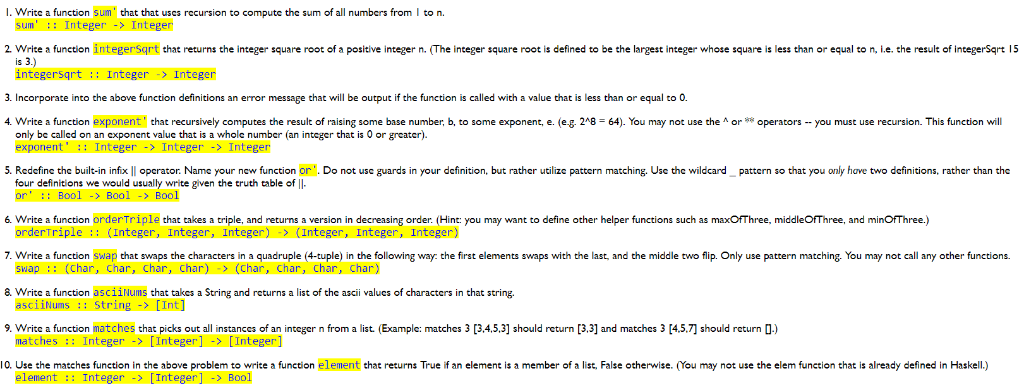Infix Function Haskell
function haskell infix wallpaperRather like -meaning a subtraction or a negative sign For example I have this operator. Functions in Haskell are usually called using prefix notation or the function name followed by its arguments.
 Some Useful X Primitives Defined Using Gfun We Adopt Haskell Download Scientific Diagram
Some Useful X Primitives Defined Using Gfun We Adopt Haskell Download Scientific Diagram
For functions that accept two arguments like it sometimes makes sense to provide an argument before and after the function infix.

Infix function haskell. Most Haskell functions are called with the function name followed by arguments prefix notation. Just as data values are built using data constructors type values are built from type constructors. O nm The isInfixOf function takes two Text s and returns True iff the first is contained wholly and intact anywhere within the second.
Functions in Haskell default to prefix syntax meaning that the function being applied is at the beginning of the expression rather than the middle. In Haskell there is a special syntax for partial application on infix operators. To understand how these operators work or to create your own you have to consider two things.
Apart from built-in operators such as and there are many libraries exposing custom operators. Custom infix operators are a common occurrence in Haskell. For example Haskell allows to transform a prefix function into an infix one by using backticks.
Is it possible with Haskell to have an operator infix function working with a missing argument. While working through Exercisms Haskell track specifically the problem asking you to implement a pangram checker I encountered a confusion point regarding infix functions. This function is strict in its first argument and lazy in its second.
2 right section is equivalent to flip 2 or more verbosely x - x 2. Unlike data constructors infix type constructors are not allowed other than -. So what is an infix function.
IsInfixOf Haskell I really like Haskell True isInfixOf Ial I really like Haskell False. Negate map 110 Not all syntax themes support these scopes almost none support keywordoperatorinfix particularly. On the other hand binary operators such as operator are called with an infix syntax which means that the operator is between the parameters.
B-c - a-b - a-c. However some functions like are called with infix notation or putting the function name between its two arguments. The syntax for Haskell type expressions is given above.
All operators are functions. Essentially you only give one of the arguments to the infix operator and it represents a function which intuitively takes an argument and puts it on the missing side of the infix operator. In unlikely bad cases this functions time complexity degrades towards O nm.
For eg is an infix function 4 5. Haskell has no prefix operators with the exception of minus - which is both infix and prefix As another example an important infix operator on functions is that for function composition. Custom Infix Operators in Haskell.
Operators and infix function application language-haskell uses keywordoperatorhaskell scope for operators and keywordoperatorinfixhaskell for infix function application eg. From what I can gather this is not an uncommon sticking point for those who are new to Haskell. As with data constructors the names of type constructors start with uppercase letters.
Some languages allow to call functions with an infix syntax too. A really cool feature provided by Haskell is using your prefix function as infix. Operators are functions which can be used in infix style.
The isInfixOf function takes two lists and returns True iff the first list is contained wholly and intact anywhere within the second. 2 left section is equivalent to 2 or more verbosely x - 2 x. For instance DataMonoid defines the infix operator as an alias for mappend.
Basically infix function is called by sandwiching the function between arguments. Haskells prefix and infix notations Like any other language out there Haskell has possibility for basic arithmetic operations addition subtraction multiplication division. The syntax between prefix functions and infix functions is interchangeable with a small change.